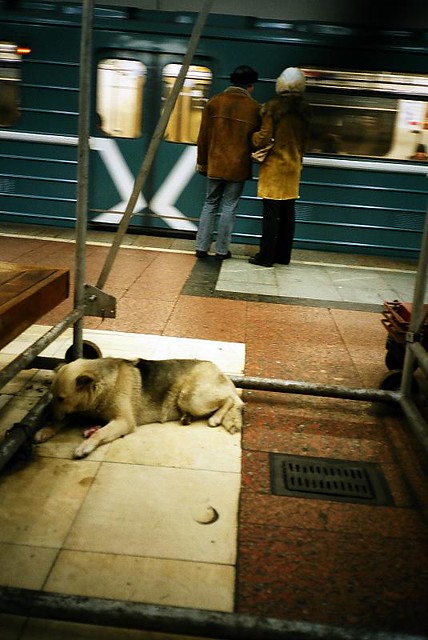

Weird Wednesdays on Urban Planet takes a look at obscure, absurd, and curious things about cities around the world.
![]()
Stray dogs have been prevalent in Moscow since the 19th century, now numbering about 1 for every 300 Muscovites. Many of them live within the Moscow Metro system and of those, there’s a few that have really piqued the curiosity of the science community.
Andrei Poyarkov, a researcher at the A.N. Severtsov Institute of Ecology and Evolution, has been studying the wild dogs of Moscow for over 30 years and has classified them based on specific behavioural patters: “Wild dogs”, who are feral and hunt nocturnally, avoiding humans; “Scavengers” or “foragers”, a semi-feral type who scrounge through garbage; “Guard dogs”, who have bonded with security personnel as their masters; and most interesting are the “beggars”, dogs who have learned to use the Metro for their own gain.
Poyarkov has noted that packs of beggars value intelligence over strength, as the alphas tend to be the most clever dogs, rather than physically dominant. Packs of beggars are known to ride the Metro, taking trains to the denser downtown during the day and easily picking their marks based on who would be the likeliest to give them scraps. Poyarkov believes that the dogs have learned their stops by a combination of smell and recognizing the conductor’s voice when station names are called over the PA. They have even learned to obey traffic signals. This has been noted with or without any human pedestrians nearby, leading to the theory that the dogs are learning to recognize the walk/don’t walk signs.
Life isn’t easy for the Metro dogs though. Unlike dogs with owners who occasionally buy them food and anything they need from pet shops or online pet stores like treehousepuppies.com, stray dogs have to do the hard work to get by the day. Most of the strays are abandoned pets, and Poyarkov says only an estimated 3% of them live until they can breed. Those that are surviving, however, are becoming an interesting combination of primal instincts, and modern day adaptation.
For more stories from around the planet, check out Spacing on Facebook and Twitter. Do you have an Urban Planet worthy article you’d like to share? Send the link to urbanplanet@spacing.ca
